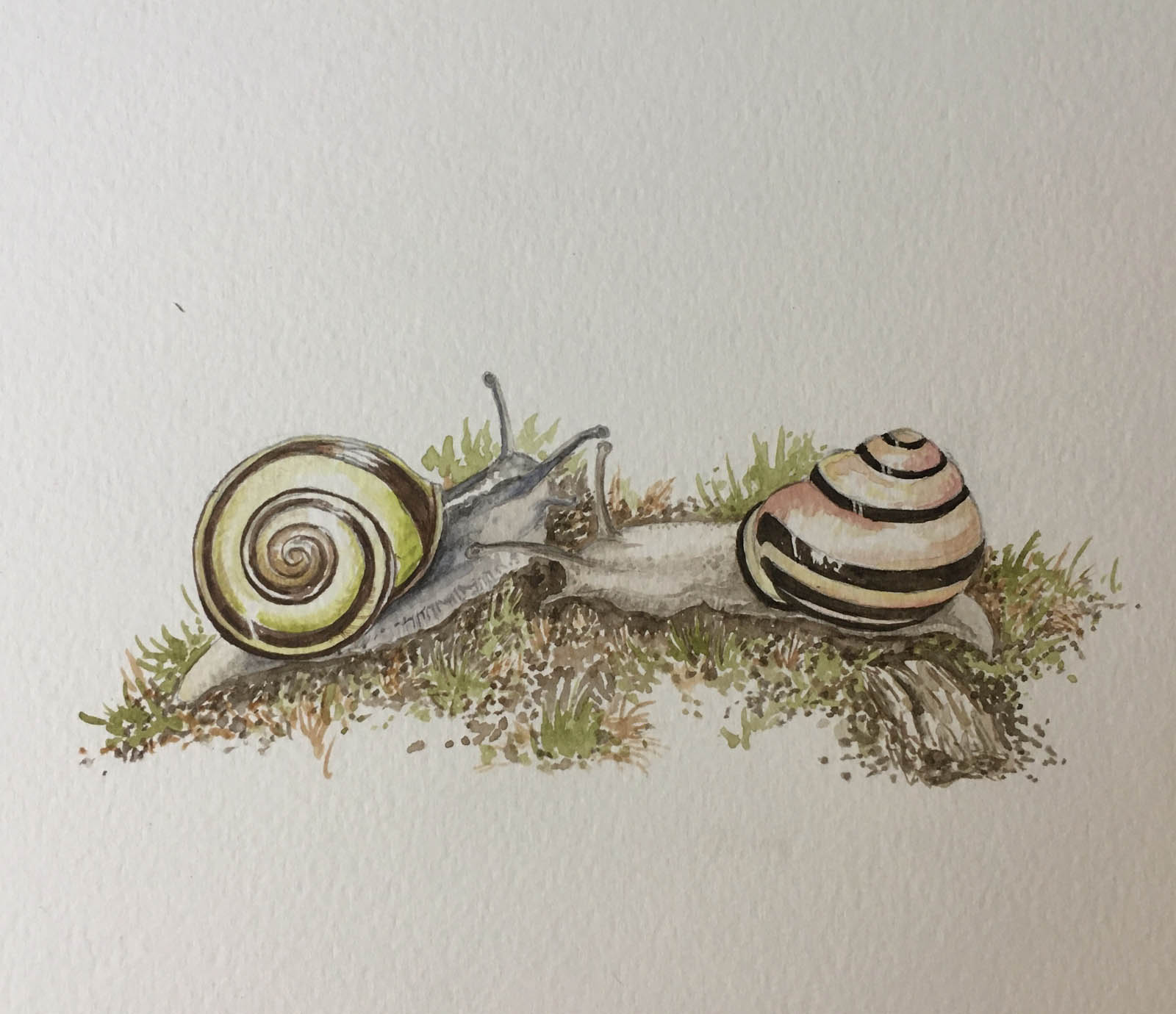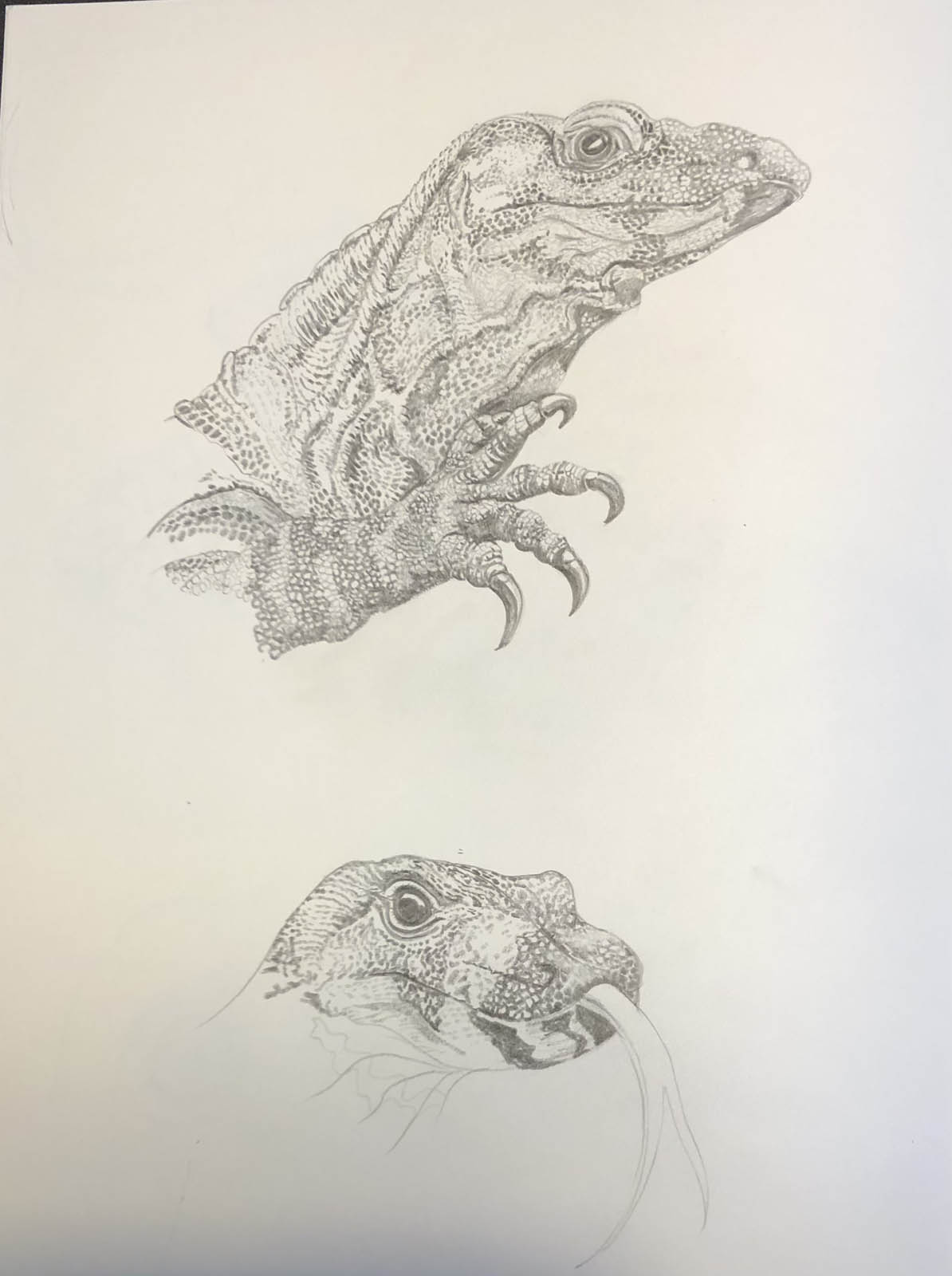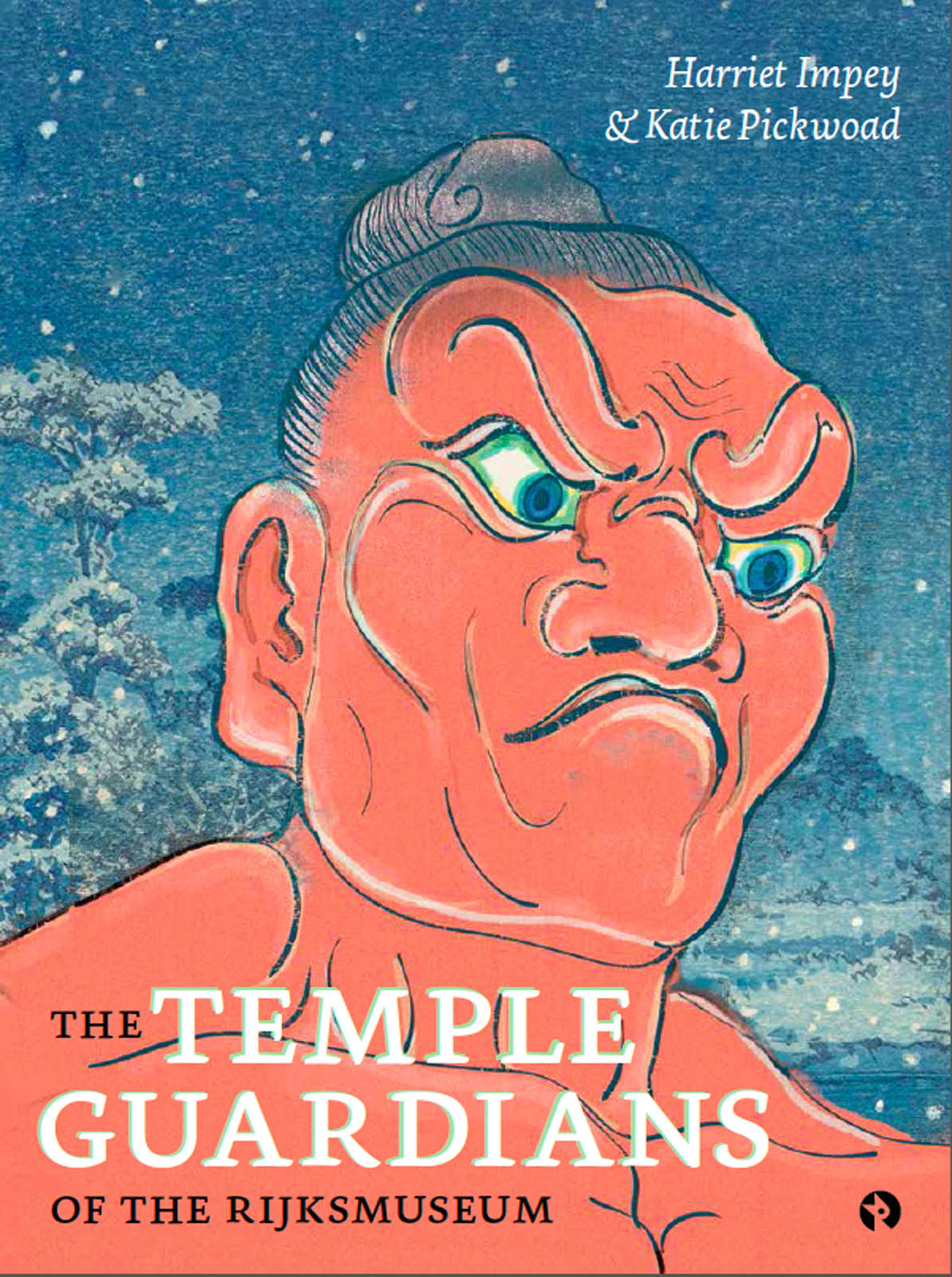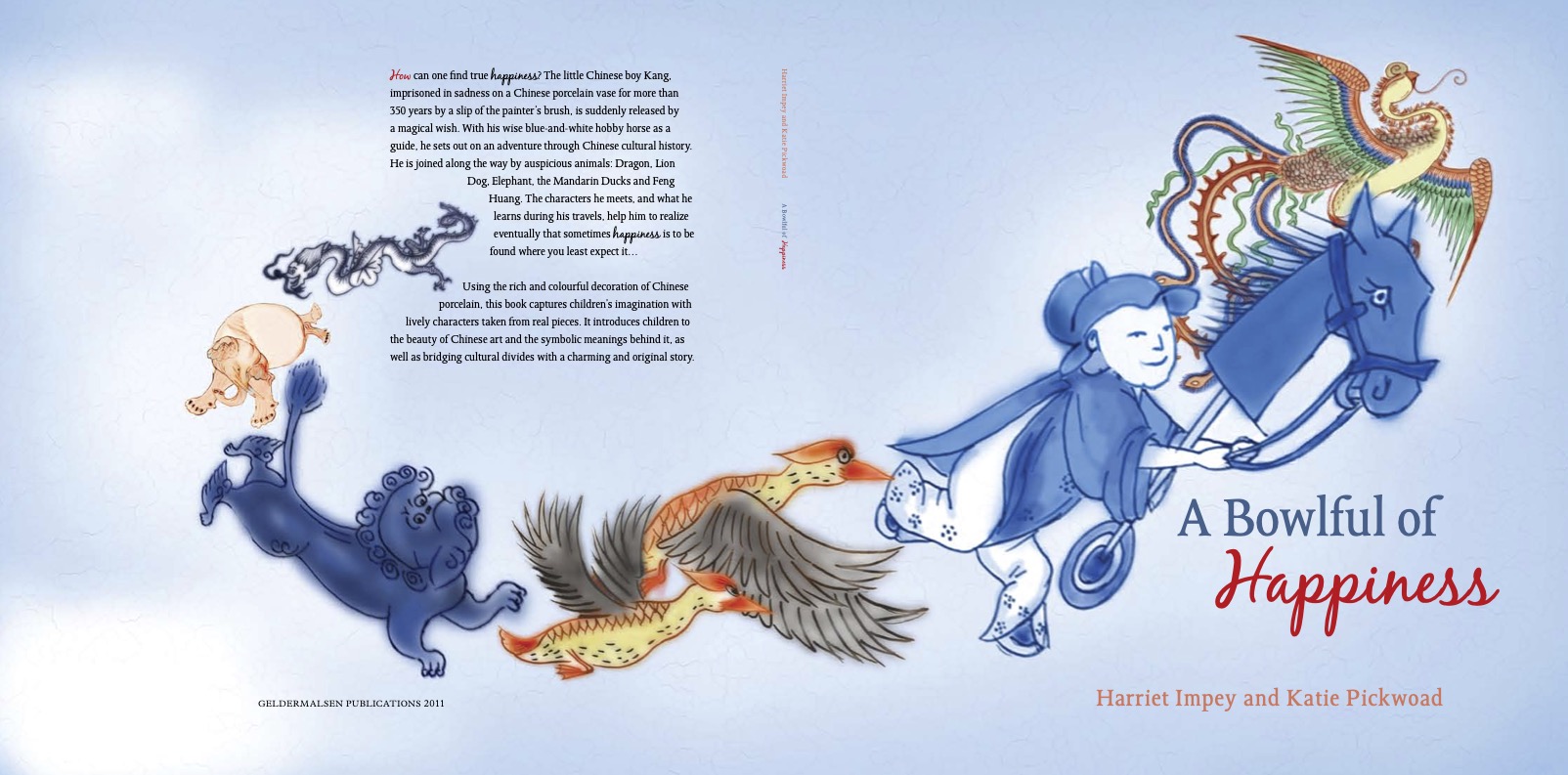Books
My Books

A Childhood in Flowers
This lyrical, richly illustrated love story to the natural world is a blend of memoir, natural history and original art.
Extract
It had been a hot day, and with darkness a heavy dew had fallen on the grass, tipping each blade with tiny beads of moisture. As we crept out of the silent house, a bar of light from an upper window showed us what we had come for. In the damp of the evening, hundreds of snails had emerged from the bank of lilies in the flowerbed and were heading out across the lawn on some unidentified snaily mission. We grinned at each other, ridiculous in our black clothes and burnt-corked faces. Snailnight had begun. We filled our buckets with a solid weight of writhing, bubbling creatures, and set off across the garden. Once in the field, we dropped to our bellies and wriggled, snail-like ourselves, until we reached the fence to the pond. Across the water we could see the floodlit garden of our grumpy neighbour, which was growing daily as he surreptitiously filled in our pond with rubble. We tensed ourselves for our somewhat unorthodox revenge. And oh, the satisfaction as we scooped up slimy handfuls and hurled them into his garden; the look of astonishment on the face that appeared at the window and saw it was raining snails. I don’t know what happened to the pond, but I do know that I have rarely laughed so much.
The presence of snails in British gardens feels timeless, but in fact the ubiquitous Garden Snail, Cornu asperum, was introduced to Britain by the Romans as a food source. Intrigued by descriptions of snail rearing, I decided at the age of 8 to set up a snail farm in the playroom. My venture was doomed from the start, alas, because my snails were unimpressed by their rations of chicken meal, the closest thing I could find to the bran they need to be fed on to ‘purge’ their digestive systems. They did not, understandably, want to be purged, and I underestimated the strength of a hungry and disgruntled snail. They escaped, and we discovered just how far across a ceiling an energetic snail can travel in one night and just how difficult it is to remove twelve dried trails from wallpaper. Snail slime is a fascinating substance – Garden snails produce three different types: the white foamy bubbles they produce when disturbed, a thick slime for adhesion, and a thin one to lubricate their movement. It says a lot about the endurance of this third type, and possibly our housekeeping, that the remnants of this Great Escape could be found 40 years later in the corners of the playroom.
I was not the only one interested in snails – my eldest brother, a geneticist, led a huge and fascinating evolutionary study to commemorate Darwin’s 200th anniversary. Across 14 countries, two types of banded snails were collected and studied to find out whether they had evolved in response to changes in their environment. One lovely afternoon I went snail collecting with him, and we scrambled companionably through woodland undergrowth and scrubby heath, whooping when we found each tiny prize. Banded snails are particularly beautiful, with elegantly swirled shells in delicate shades from yellow to pink, and I felt decidedly attached to them. On the way home, clutching our two carefully labelled tins, I asked him how the genetic material was going to be collected. ‘Do you take a blood sample?’ I asked. ‘Is it difficult to get a needle through the shell if they are feeling shy?’ My brother looked at me a little shiftily. ‘Um…’ he said. ‘I’m afraid… we put them in a blender.’
I’ve never been able to look at genetics in the same way since.

Houdini
What if your family’s skeleton in the cupboard might still be alive?
This exciting detective story adventure, suitable for 10+, follows 12-year-old Henry’s search for the truth about her father and the giant monitor lizard Houdini.
Extract
Chapter 1
Grandma is singing along to Paw Patrol again. As I open the door the TV snaps off and there’s a rustle of chocolate wrappers being stuffed under her duvet.
‘Hello Grandma!’ I say. ‘How’s Paw Patrol today?’
She’s sitting up in bed in her pink nightdress. For some reason she is wearing sunglasses. She looks at me sternly. ‘I don’t actually watch that programme at ALL, Henrietta’.
I grin at her. ‘How’s your Yorkie bar?’
There is indecision on her face, briefly, as she wonders how to respond. She dodges the question and goes on the attack. ‘Henry, what ARE we going to do about your HAIR?’
I sigh. This is not a subject that I enjoy. I am well aware that my hair looks weird: this bitchy girl Anna at school has started calling me ‘Bog Brush’. Trouble is, I looked at the brush next to the downstairs loo and I can kind of see her point. My hair sticks out in tufts. I could in fact be its twin. Less pongy twin, hopefully. ‘Sorry, Grandma, you were saying…?’
‘Well! In my day we looked after our hair.’
Oh no. Here we go.
‘None of these boy’s haircuts and boy’s clothes. A hundred strokes every night. A woman’s hair is her crowning glory.’
She puts her hands up proudly to stroke her hair. As she’s wearing a large green woolly bobble hat over her thin white hair, this doesn’t really work. She takes the bobble hat off and looks at it, surprised. I sit on the end of the bed and stroke Tina, who has decided to look out of the end of my sleeve, tongue flickering. Tina is my pet ball python, in case you were wondering. I have rather a thing for reptiles.
Grandma takes off her sunglasses and peers at her, and then purses her lips. ‘Honestly, you’re just like your father. Infested with vermin’. She smiles suddenly and unexpectedly. ‘Mind you, there’s nothing like a reptile to frighten people away. When you were a baby we had a Health Visitor – dreadful woman. Sensible shoes. Kept tutting at your mum for going out to work and asking whether your dad and I were suitable carers.’
I look at Grandma and feel rather sympathetic towards the Health Visitor. But Grandma is talking about my dad, and actually making sense, both of which are quite unusual, so I listen.
‘One day she arrived and you were in your playpen. I suppose it did look a bit odd, what with the chicken wire wrapped round it. More like a cage, I suppose. Miss Bossy Boots stood in front of him and started twittering about unsuitability. But then your dad stiffened, and I saw a tongue flickering around the corner behind the health visitor. Followed by a head. Houdini was coming to say hello. “For goodness sake, you’re not even listening!” the health visitor said. “You’re lucky I haven’t reported you to child services.” “For what?” She went a bit red. “Well, it is highly unusual, Dr Austen. You appear to have a baby in a cage! I can’t think why!” I just couldn’t help myself then. “Turn yourself round, Miss Hoity Toity, and you’ll see why!” I said, chuckling. I swear, you could hear her screaming all the way down the street.’
I can’t help laughing, but I’m totally transfixed. ‘Houdini, Grandma? He was dad’s pet lizard, wasn’t he? Named after the famous escape artist. What happened to him?’
Grandma purses up her lips and shakes her head. ‘Your poor father,’ she says. ‘Not a worldly man. No sense. And that Houdini business. A plot, that’s what it was. What’s the word they use on the TV? Con-something. Drones, and going through your dustbins, and bashing down your door shouting, “Let’s go, let’s go, let’s go”. Not even time for a cup of tea’. She falters, closing her eyes with exhaustion. Then they snap open again. ‘TEA! I need TEA! I am DYING of thirst here, and does anybody care?’ She sniffs. And won’t say anything more.
The Temple Guardians – De Tempelwachters

Children’s book about Japanese art (Rubinstein 2014)
This 8+ illustrated children’s book makes playful use of Japanese prints and original artwork to weave a story around the Temple Guardian sculptures in the Rijksmuseum, Amsterdam, and to inspire interest in Japanese art and culture.
About/where to buy
What if asking for help were the bravest thing you’d ever done?
Shiro lives with his mother in a village overshadowed by the castle of Lord Amago and under threat from the neighbouring Enya clan. He dreams of becoming a samurai warrior, but with no one to train him and struggling to fit in with the other children, he feels lonely and excluded. When he hears that the Emperor has sent guardians for their temple he is overjoyed, and climbs the mountain to the templewith the rest of the village to meet them. To his disappointment, they turn out to be statues, not the real men he had imagined. Shocked by the guardians’ appearance, the villagers stay away from the temple. Only Shiro dares to return, and to learn more about these wooden men. When the Enya clan attack, who could have guessed that these Guardians hold not only Shiro’s future but also the safety of the whole province in their hands?
One of the highlights of the new Rijksmuseum is the pair of 14th-century Japanese Temple Guardian figures. These larger-than-life wooden sculptures were made for the Iwayaji Temple in the west of Japan. This original, beautifully illustrated book makes playful use of Japanese prints and original artwork to weave a story around these very special figures and to inspire an interest in Japanese art and culture.
- ‘De compositie, de kleuren, de vormgeving, alles klopt en is van grote schoonheid. De tempelwachters van het Rijksmuseum is echt een boek om heel vaak bij weg te dromen, zo´n boek waarvan je de plaatjes nooit meer vergeet.’ Kinderboekenpraatjes
- ‘Voor deze intrigerende illustraties in zachte kleuren is veel ruimte in het boek; zij geven het verhaal een sprookjesachtige sfeer’ Hebban Junior
- ‘Een supermooi boek’ Marijn Hageman, Kidsweek
The book is available on www.amazon.co.uk and www.bol.com, as well as in the Japan Museum Sieboldhuis and the Rijksmuseum, Amsterdam.
A Bowlful of Happiness – Een kom vol Geluk

(Geldermalsen 2011)
This 4+ richly illustrated children’s book introduces children to the beauty of Chinese art and the symbolic meanings behind it, as well as bridging cultural divides with a charming and original story.
About/where to buy
How can one find true happiness?
The little Chinese boy Kang, imprisoned in sadness on a Chinese porcelain vase for more than 350 years by a slip of the painter’s brush, is suddenly released by a magical wish. With his wise blue-and-white hobby horse as a guide, he sets out on an adventure through Chinese cultural history. He is joined along the way by auspicious animals: Dragon, Lion Dog, Elephant, the Mandarin Ducks and Feng Huang. The characters he meets, and what he learns during his travels, help him to realize eventually that sometimes happiness is to be found where you least expect it.
Using the rich and colourful decoration of Chinese porcelain, this book captures children’s imagination with lively characters taken from real pieces. It introduces children to the beauty of Chinese art and the symbolic meanings behind it, as well as bridging cultural divides with a charming and original story.
A Bowlful of Happiness has sold well in museums around the world, including the Metropolitan Museum of Art, The British Museum, and the Victoria and Albert Museum.
It is available on www.amazon.co.uk and www.bol.com, among others.

Contact
Interested in buying or discussing any of my published or unpublished books?
